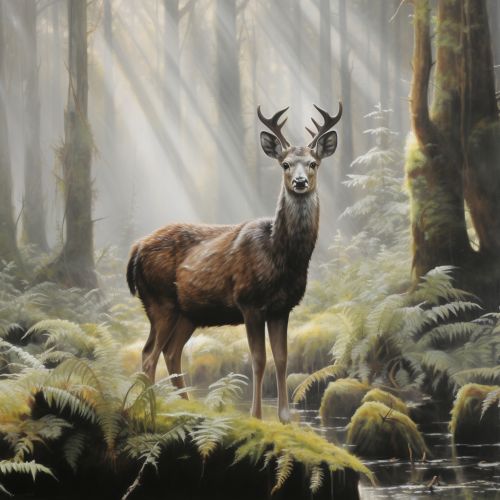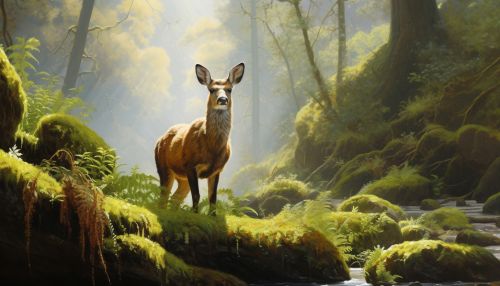Musk deer
Taxonomy and Evolution
The Musk Deer, scientifically known as Moschus, belongs to the family Moschidae in the order Artiodactyla. The genus Moschus is further divided into several species, including M. moschiferus, M. berezovskii, and M. chrysogaster, among others. The taxonomy of Musk Deer has been a subject of debate among scientists due to the morphological similarities among species, leading to frequent reclassifications.


The evolution of Musk Deer is traced back to the early Miocene epoch, approximately 20 million years ago. Fossil records suggest that the ancestors of Musk Deer were more similar to modern deer, possessing antlers and other typical cervid features. Over time, these deer evolved to adapt to their specific ecological niches, resulting in the unique characteristics seen in modern Musk Deer.
Physical Characteristics
Musk Deer are small, compact animals with a body length ranging from 80 to 100 centimeters and a shoulder height of about 60 centimeters. Unlike most deer species, Musk Deer lack antlers. Instead, they possess elongated upper canine teeth, or tusks, which protrude from the mouth and can reach up to 7 centimeters in length in males. These tusks are used primarily for territorial disputes and during the mating season.
The coat of the Musk Deer is thick and coarse, providing insulation against the cold climates in which they live. The coloration varies from dark brown to grey, with a lighter underbelly. They have large, rounded ears and small eyes. Their hind legs are significantly longer than their front legs, giving them a distinctive, hunched appearance. This unique body structure aids in their ability to navigate steep and rugged terrain.
Distribution and Habitat
Musk Deer are native to the mountainous regions of Asia, including the Himalayas, Tibetan Plateau, and parts of Russia, China, and Mongolia. They inhabit dense forests and alpine meadows, typically at altitudes ranging from 2,500 to 4,000 meters. Their preferred habitats are characterized by steep, rugged terrain with ample vegetation for cover and forage.
Behavior and Ecology
Musk Deer are primarily solitary animals, with males occupying small, exclusive territories. They are most active during the early morning and late evening, exhibiting crepuscular behavior. Their diet consists mainly of leaves, twigs, lichens, and mosses. They have a unique, four-chambered stomach that allows them to efficiently digest this fibrous diet.
During the mating season, or rut, male Musk Deer become more aggressive and actively defend their territories. The males use their tusks to fight rivals and attract females. After a gestation period of about six months, the female gives birth to one or two fawns.
Conservation Status
Musk Deer populations have been declining due to habitat loss and poaching. The musk gland of the male Musk Deer, which produces a highly valued substance used in traditional medicine and perfumery, has led to intense hunting pressure. Several species of Musk Deer are listed as endangered or vulnerable on the IUCN Red List.
Conservation efforts are focused on habitat protection and anti-poaching measures. Captive breeding programs have also been initiated in some regions to bolster wild populations.
